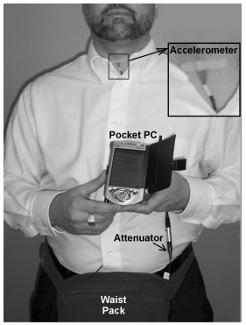NCVS Database Uncovers Key Gender-Related & Occupational Characteristics in Teachers Voice Use
Eric Hunter - eric.hunter@ncvs2.org
Deputy Executive Director & Associate Research Scientist
National Center for Voice and Speech
Office of University of Utah Vice Pres. for Research
University of Utah
201 Presidents Circle, Rm 210
Salt Lake City UT 84112-9011
Popular version of paper 1aSC14
Presented Monday Morning, October 26, 2009
158th ASA Meeting, San Antonio, TX
Scientists from the National Center for Voice and Speech (NCVS) are examining teachers voices in an attempt to develop a series of vocal health standards (similar to OSCHA standards). Their most recent research, funded by the National Institute on Deafness and Other Communication Disorders, has uncovered key gender differences in how teachers use their voices. It also highlights how teachers adapt their voices to suit the demands of classroom teaching.
The demands of classroom teaching cause teachers to speak frequently and often quite loudly, risking occupational damage to their voices. Unlike singers and actors, teachers are usually forced to continue to use their voices even when they experience symptoms of vocal fatigue such as a sore or scratchy throat. Many studies highlighted the negative impact of these voice problems. For example, while teachers comprise only 4.2% of the U.S. workforce, a 2001 study calculated that their voice-related difficulties cost the U.S. economy approximately $2.5 billion annually in lost workdays, payments to substitute teachers, vocal therapy costs, and forced early retirement (Verdolini and Ramig, Logopedics, Phoniatrics and Vocology). Furthermore, a 1991 study demonstrated the impact on students themselves: increased teacher absences led to decreased student attendance and achievement (Ehrenbert et al. Journal of Human Resources, 1991).
To examine this problem, NCVS scientists tracked the times of day teachers most used their voices and how they altered their voices pitch and volume during the day.
This study highlighted significant gender-related differences. Female teachers used their voice about 10 percent more than males when teaching, and about 7 percent more when not teaching. Further, female teachers spoke louder than male teachers when teaching. These results may indicate an underlying reason for female teachers increased voice problems.
It was also found that teachers spoke about 3 decibels louder at work than they did when not at work. Furthermore, teachers spoke about 50 percent more at work often speaking 40-50 minutes during a 60-minute period. Also significant was the amount of time teachers spoke outside the classroom, which would prevent adequate vocal rest and, more significantly, add more stress to an already vocally fatigued voice.
These findings were uncovered by the NCVS voice databank of voice recordings captured with the NCVS Voice Dosimeter (Figure 1). The dosimeter recorded voice data (as opposed to actual speech) 33 times a second. Teachers involved in this still ongoing study wore the voice dosimeter all day for two weeks, resulting in approximately 100,000 voice records per hour, 1.4 million records per day, and 20 million records over an entire 14-day period.

Figure 1. The NCVS Voice Dosimeter, consists of a modified Pocket PC with an accelerometer as the transducer. The cabling runs underneath the clothing and the dosimeter is worn in a fanny pack to be as unobtrusive as possible to the wearer.